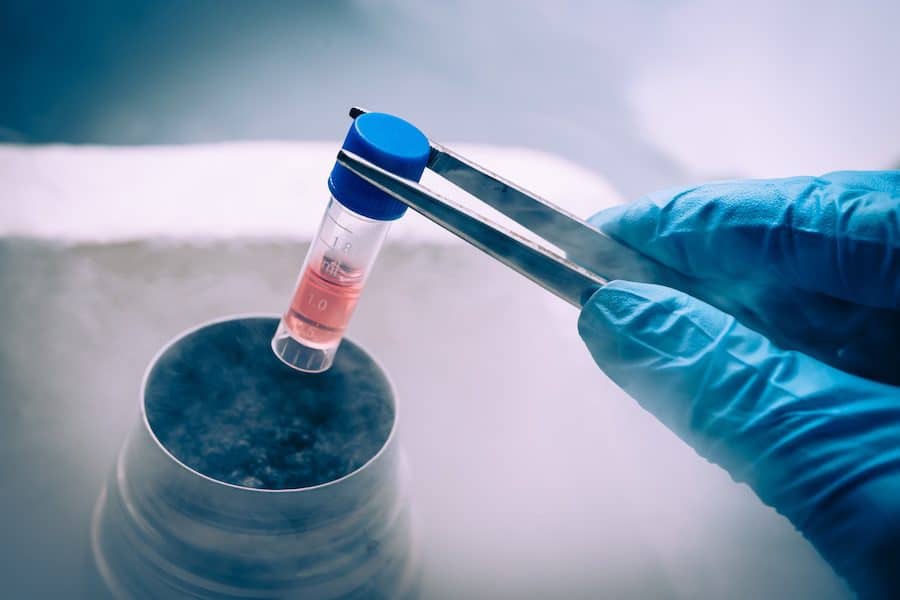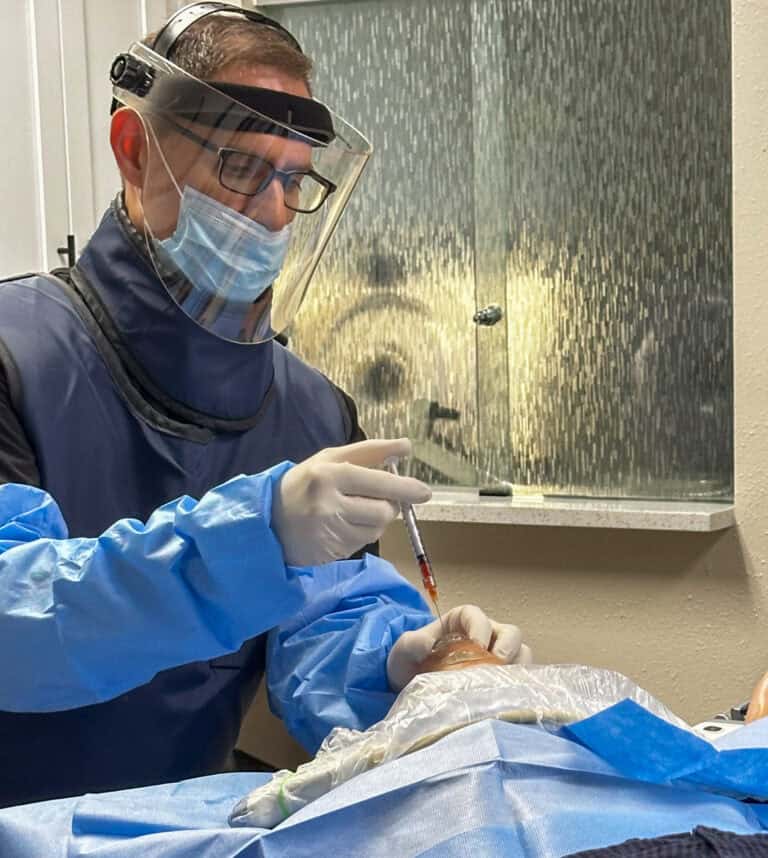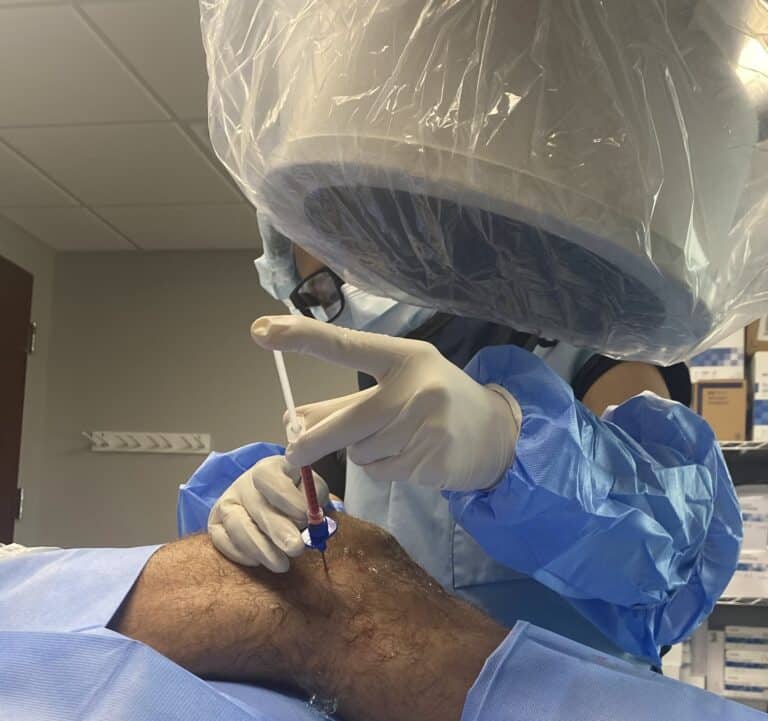The idea of utilizing routinely discarded birth tissues to harvest viable stem cells for orthopedic medicine is an exciting topic. Unfortunately, there are currently no FDA-approved uses for allogeneic (coming from someone else) stem cell products other than bone marrow transplantations. Even more disturbing is the fact that the vials of amniotic “stem cells” that sales reps are selling to many physician providers do not contain any living stem cells. Today it appears that almost every provider is pushing “stem cell” therapy. We strongly urge patients to arm themselves with knowledge against unauthorized providers and fraudulent claims. To help educate you on all things stem cells, we have created this compilation of the most frequently asked questions about amniotic, placental, and umbilical stem cells and their true answers.
What are amniotic, placental, and umbilical tissue-based products?
As you may know, babies, while they are still in their mother’s womb, are encased in a fluid-filled sac. The walls of this sac are known as the amniotic membrane. The sac is ruptured when a woman’s water breaks and she goes into labor. That ‘water’ is amniotic fluid. Following the birth of a child, the amniotic membrane and/or fluid can be collected, sterilized, and processed into a variety of tissue-based products. Placental and umbilical tissue can also be obtained for the same purpose. Regrettably, these products are currently being pitched and sold to doctors as “stem cell” products. Most of these products do, in fact, contain many valuable growth factors that can stimulate your own stem cells when injected into your tissue. However, it is NOT accurate to call them a stem cell procedure in of themselves. Company representatives shouldn’t be making these claims to physicians and furthermore, physicians should not be making these claims to patients nor should they be upcharging patients for “stem cells”.
Are there stem cells in amniotic, placental, and umbilical tissues?
There are stem cells in fresh amniotic membrane and fluid along with placental and umbilical tissue but they are limited. With that said, once the tissues are processed into FDA-compliant tissue-based product, the included cells are killed or “terminally sterilized.” Federal regulations state that these tissue-based products cannot (are not allowed to) be dependent on the activity of living cells. If any of the stem cells survived the processing, the product would then have to be classified as a drug by the FDA and would not be marketable until clinical trials for each indication could be conducted. The FDA has issued enforcement letters in the past to companies selling these products containing living cells stating that their products are in fact a drug and, therefore, must be regulated as such.
Today, all amniotic, placental, and umbilical tissue-based products are classified by the FDA as a human tissue without living cells. This means that the products without living cells do not need to undergo clinical-trials validation before being sold. Again, if they did contain living cells, they would need to be approved as a drug. So to be clear, either these companies are selling an illegal unapproved drug or more likely, they are selling a dead tissue product that they claim has living stem cells. Obviously, both of these scenarios are problematic to say the least.
What else does amniotic fluid contain?
You may be surprised to find out that amniotic fluid, on average, is about 75% baby urine and in an environment that is already filled with urea and uric acid, logic states that it may be difficult for stem cells to thrive. Note that amniotic fluid that has been processed does retain some growth factors and cytokines that can be injected to help promote healing. In addition, amniotic fluid contains collagen and extracellular matrix proteins. Before you go spending thousands of dollars on a vial of amniotic, placental, or umbilical fluid/tissue, you may want to consider another alternative.
At this time, there is no data to support that these allogenic tissue products are any better than your own platelet-rich plasma (PRP). PRP contains your own healing growth factors, is not nearly as expensive, and is much easier to obtain. When considering regenerative medicine, PRP is an excellent option that likely accomplishes the same thing, if not better than, a vial of amniotic fluid for a fraction of the price.
Why are sales reps pushing amniotic, placental, or umbilical “stem cells”?
Unfortunately, expensive vials of amniotic, placental, or umbilical tissue-based products represent a scalable, one-size fits all product that aligns with the pharmaceutical industry’s traditional mass marketing business plan. On the other hand, PRP requires a doctor’s office to take blood from the patient and process it into a growth factor-rich therapeutic. Most importantly, the platelet-rich plasma comes from the patient’s own blood. This eliminates any possibility of bodily rejection and if processed correctly can be customized specifically to the needs of the specific patient. So why are sales reps pushing these ready-to-inject vials?
For many providers, the process of drawing patients’ blood is inconvenient and time-consuming. Also, simply put, most providers probably don’t know any better. They believe they are using live “stem cells” because they believe what sales reps are pitching to them. Pharmaceutical reps should know the difference, but it is not highly likely that they understand what they are selling. Unless a physician provider has access to state-of-the-art labs to fully investigate a product, they must rely upon sales pitches that are potentially full of misinformation and fraudulent claims.
How do you know that vials of amniotic fluid, placental, or umbilical tissue contain no stem cells?
If these tissue-based products did contain living stem cells, we can guarantee you that Regenexx would have signed on to become one of the biggest customers. The reality is that we have conducted the lab research on these products, determined the validity of these claims, and uncovered deception. Regenexx began the project in a clinical lab and then handed it over to the Interventional Orthopedics Foundation (IOF) because the market became so saturated with claims of these products and outpaced Regenexx’s ability to stay ahead of the curve. At IOF, research scientists looked at many things during the “stem cell” study including:
- Did the products contain any living cells?
- Did the products help older stem cells?
- Did the products contain any growth factors?
The results from using their sophisticated equipment featured in this video were as follows:
- The IOF did not find any living cells in these products.
- The products did not help the performance in older stem cells.
- They did not contain more growth factors than a PRP shot.
Research on amniotic stem cells
After entering a few searches in the US National Library of Medicine, one study, in particular, was found that looked at amniotic membrane that was chopped up and then injected into patients suffering from plantar fasciitis. This product contained no live stem cells, however. This is another example of amniotic tissue-based product where the amniotic membrane was cleaned, tested, processed (freeze-dried) and then cut into sheets or finely chopped (micronized) for injection. In contrast, there’s a good deal of research showing that bone marrow stem cells are likely helpful in treating orthopedic conditions. You would think that if providers are going to use amniotic stem cell products that there would be research to support their use, but it simply does not exist.
AmnioFix by Mimedix
One product that is worth mentioning as an exception is called AmnioFix by Mimedix. This product is made from amniotic tissue and of course, contains no stem cells. However, the product has been approved by the FDA in the category of Regenerative Medicine Advanced Therapy (RMAT) for knee osteoarthritis. Additionally, Mimedix has not made any false claims and has shown a commitment to research. We have used this product by itself and in combination with bone marrow-derived stem cells and have noticed good clinical benefit. The charge for this is approximately in line with a PRP injection.
Knowledge is power with so many inaccurate claims being thrown around by physicians using these products. The use of amniotic, placental, and umbilical “stem cells” is most concerning as they simply do not exist as an orthopedic treatment option. Even though we may be able to justify using them for their growth factors, the reality is that a patient’s own platelet-rich plasma (PRP) likely provides a better overall treatment option with an added financial benefit. Hopefully, this article will keep you informed regarding the facts and fiction surrounding amniotic stem cells.











